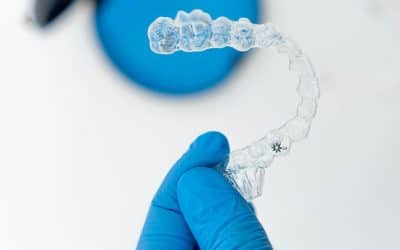When it comes to porcelain veneers and composite bonding, you may wonder which option suits your needs and situation best. Explore the differences in order to find the ideal solution for your unique smile.
Porcelain Veneers vs Composite Bonding
Porcelain veneers are custom-made shells that often require multiple visits. With composite bonding, a tooth-coloured resin material is applied and shaped directly onto the tooth in a single visit.
Choosing between them will hinge on your individual needs and desired outcomes. Let’s examine the main differences between these sought-after cosmetic treatments.
Read more: Dental crowns
What Are Porcelain Veneers and Composite Bonding?
Composite bonding includes a resin material that closely matches your tooth colour, which is applied and hardened with a special light during the procedure. One of its prime advantages is that it can be easily repaired or adjusted as needed. Composite bonding offers a multifaceted solution, whether mending chipped teeth, reshaping teeth, or even protecting teeth whose roots are exposed due to gum recession. Post-procedure, it’s essential to maintain regular dental hygiene to ensure its longevity.
Differences Between Porcelain Veneers vs Composite Veneers
Durability
While composite bonding veneers are robust, they don’t quite match the resilience of porcelain. However, their lifespan can be notably extended with diligent care and maintenance, such as regular check-ups and avoiding hard foods. For instance, you should consume foods like hard candies with caution.
Additionally, it’s essential to remember that bonded teeth may not have the strength of natural teeth. Daily habits, especially teeth grinding, can lead to chipping or cracking of the bonded material.
Time
On the other hand, composite bonding can often be completed in a single visit, making it an ideal choice for those looking for quicker solutions.
Preservation of Natural Teeth
In contrast, composite bonding champions a less invasive approach, rarely requiring significant removal of the existing tooth structure. This minimally invasive approach is a cornerstone of modern dentistry, prioritising the long-term health and preservation of the patient’s natural teeth.
Cost
The cost consideration is significant, especially since most dental insurance plans don’t cover these cosmetic procedures. However, while porcelain veneers have a higher initial cost due to the intricate fabrication process and the expertise required, their longevity might balance out the expenses in the long run. It’s essential to weigh immediate costs against the potential long-term value and frequency of replacements or repairs.
Aesthetics
Some patients undergo teeth whitening treatments before opting for cosmetic procedures like dental bonding. Whitening can offer a uniform brightness, ensuring subsequent treatments blend seamlessly with the natural surrounding teeth. It’s a beneficial step for those looking to achieve optimal aesthetic outcomes. Bondi Family Dentist offers in-chair teeth whitening treatments and take-home teeth whitening kits, providing affordable and convenient solutions.
Read more: Professional teeth whitening vs at-home whitening
Conclusion
Choosing an option that enhances your smile and aligns with your lifestyle and dental history is essential. Whether you’re leaning towards porcelain veneers or the multifaceted benefits of composite bonding, a consultation with a dental professional is paramount. This helps to ensure that the selected treatment harmoniously aligns with your dental health, budget, and aesthetic aspirations.
Considering dental veneers to elevate your smile’s aesthetics and functionality? Bondi Family Dentist is ready to guide you through your journey. Book a consultation with us, and let’s craft the radiant smile you’ve always envisioned.





